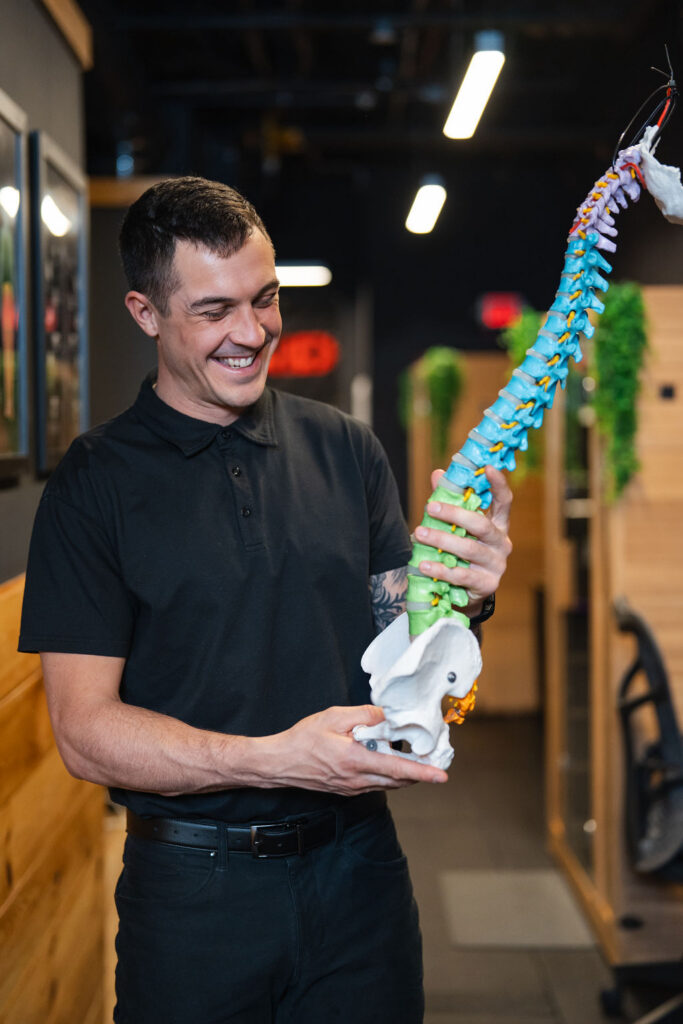Spine Education
Understanding Your Spine: The Foundation of Your Health
Your spine is one of the most important structures in your body. It supports your weight, protects your spinal cord, and plays a vital role in your nervous system. At Top Spine Chiropractic in Worcester, we believe that spinal health is directly connected to your overall well-being. A properly aligned spine supports better movement, posture, and communication between the brain and the rest of the body.
The spine is divided into five major regions, each with its own unique structure and function. Together, these regions house and protect the spinal cord, which sends messages to and from your brain. When any part of the spine becomes misaligned, it can interfere with nerve signals and lead to symptoms that affect other areas of the body — sometimes immediately, and sometimes subtly over time.

The Five Regions of the Spine:
Cervical Spine (Neck)
Vertebrae: C1–C7
The cervical spine supports your head and allows for a wide range of motion including turning, tilting, and nodding. It also houses the nerves that control the head, face, throat, arms, and hands. Misalignments in the cervical spine can lead to symptoms like:
- Neck pain or stiffness
- Headaches or migraines
- Numbness or tingling in the arms and hands
- Dizziness or balance issues
- Sleep disturbances
Thoracic Spine (Upper and Mid Back)
Vertebrae: T1–T12
This region anchors the rib cage and protects the vital organs in the chest. It plays a key role in posture and breathing. Thoracic misalignments can impact the function of the lungs, heart, and digestive organs. Common symptoms include:
- Mid-back pain
- Tightness in the chest or ribs
- Difficulty breathing deeply
- Poor posture or rounded shoulders
- Gastrointestinal discomfort
Lumbar Spine (Lower Back)
Vertebrae: L1–L5
The lumbar spine bears most of your body’s weight and provides flexibility for bending and twisting. It’s also the most common area where back pain occurs. Nerves from this area extend into the legs and feet. Lumbar misalignments may result in:
- Lower back pain or stiffness
- Sciatica (pain radiating down the leg)
- Muscle weakness in the legs
- Numbness or tingling in the lower extremities
- Difficulty standing or walking
Sacrum
Fused Vertebrae: S1–S5
The sacrum connects the spine to the pelvis and helps stabilize the upper body. It’s made up of five fused vertebrae that work closely with the hip bones. Sacral misalignment can lead to:
- Pelvic pain
- Hip imbalance
- Lower back tension
- Reproductive or urinary issues
Coccyx (Tailbone)
Vertebrae: 3–5 fused segments
The coccyx is the small, triangular bone at the base of your spine. Although small, it plays a role in supporting your body while sitting and is attached to many ligaments and muscles. Misalignments in this area can cause:
- Tailbone pain, especially when sitting
- Discomfort during movement
- Postural issues
Why Spinal Health Matters
Each spinal region plays a key role in your body’s function and balance. When one part of the spine is misaligned, it can cause a chain reaction that affects everything from mobility to digestion to energy levels. Regular chiropractic care helps maintain proper alignment and keeps your nervous system functioning at its best.
At Top Spine Chiropractic in Worcester, we provide detailed spinal assessments and targeted care to ensure your spine supports your health—not limits it.
What Patients Are Saying

Book Your Appointment!
Get started on your path to optimal health!
